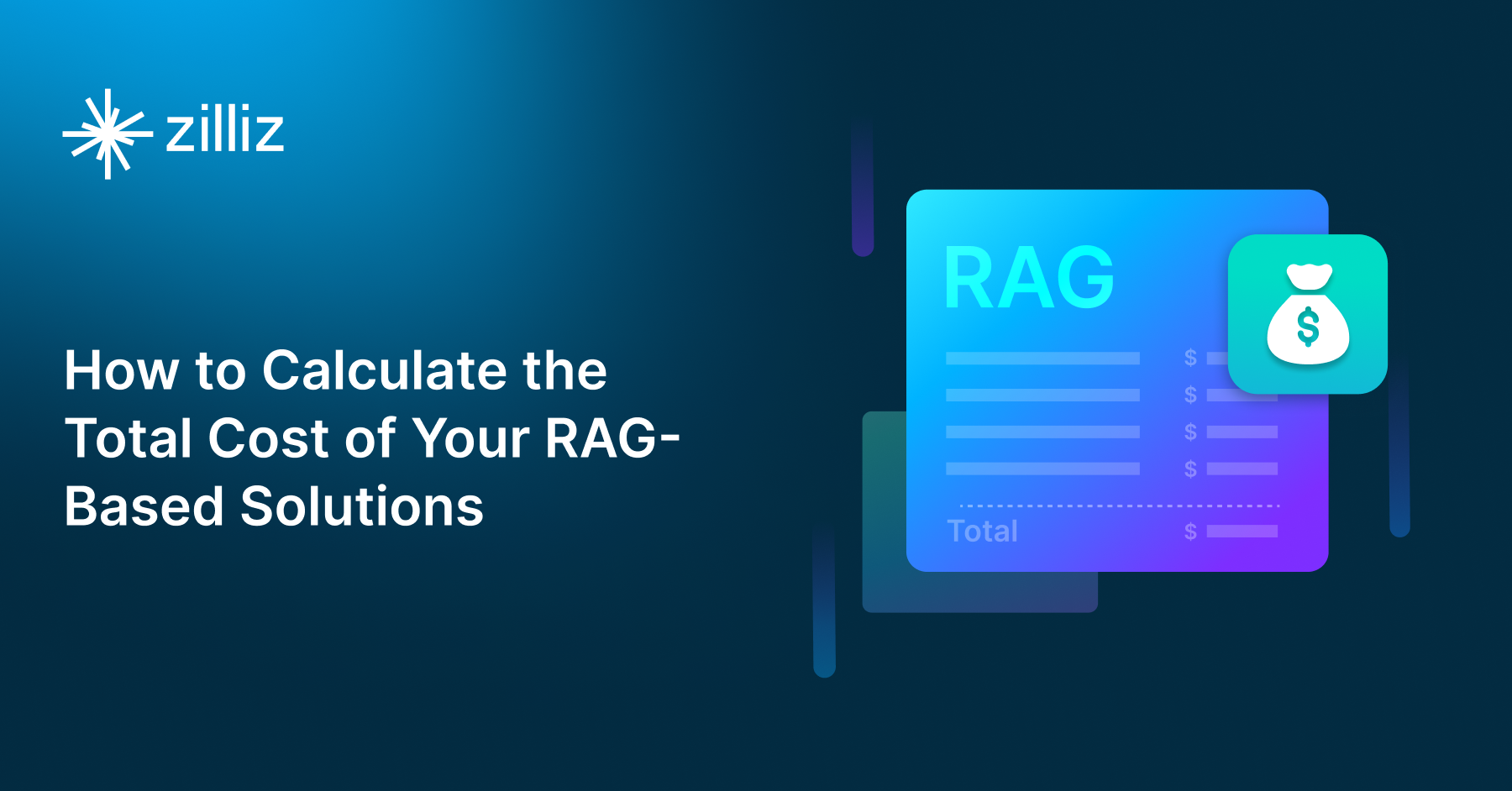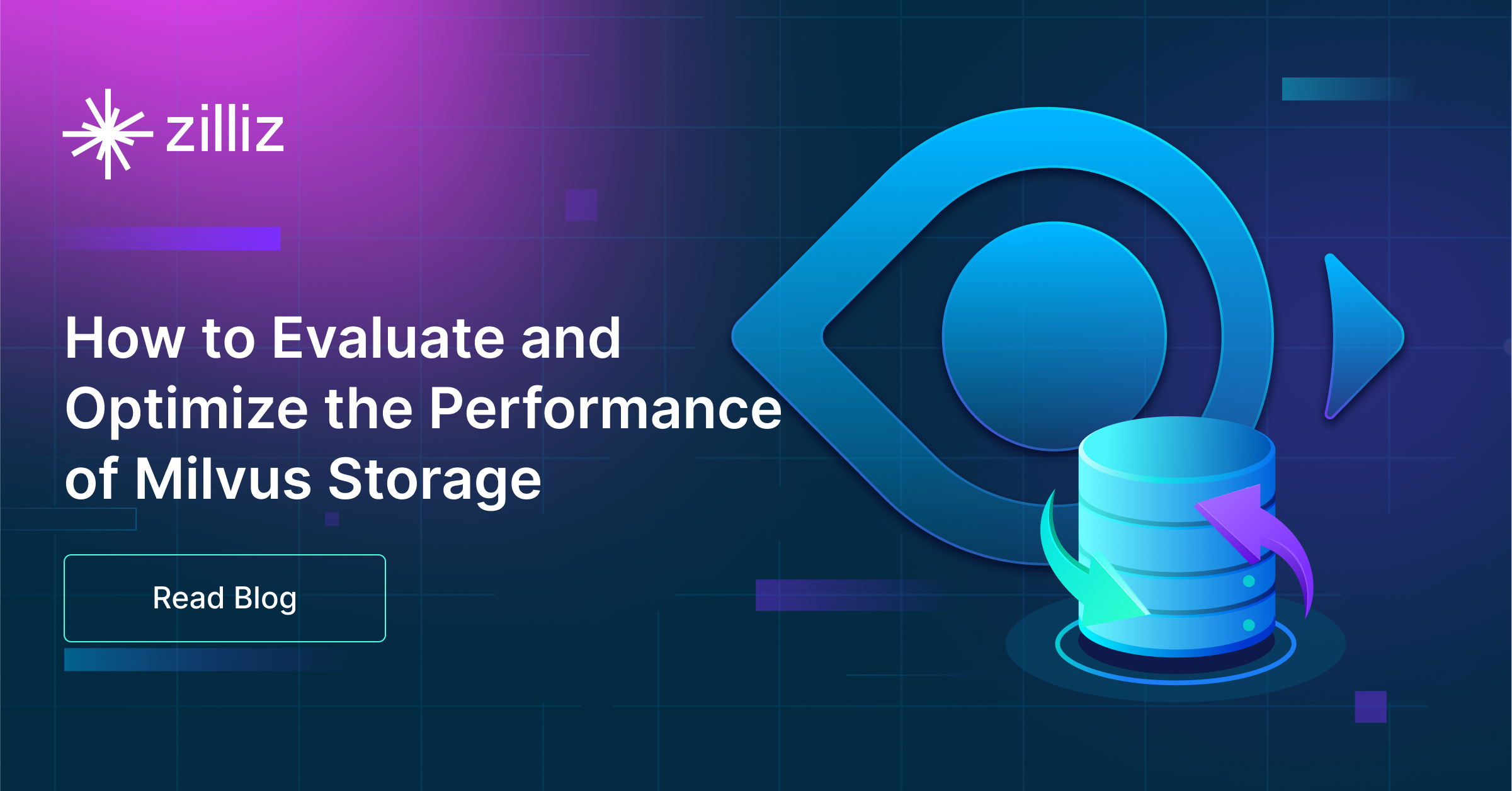Build RAG Chatbot with LangChain, Milvus, Mistral AI Mistral Small, and NVIDIA arctic-embed-l
Introduction to RAG
Retrieval-Augmented Generation (RAG) is a game-changer for GenAI applications, especially in conversational AI. It combines the power of pre-trained large language models (LLMs) like OpenAI’s GPT with external knowledge sources stored in vector databases such as Milvus and Zilliz Cloud, allowing for more accurate, contextually relevant, and up-to-date response generation. A RAG pipeline usually consists of four basic components: a vector database, an embedding model, an LLM, and a framework.
Key Components We'll Use for This RAG Chatbot
This tutorial shows you how to build a simple RAG chatbot in Python using the following components:
- LangChain: An open-source framework that helps you orchestrate the interaction between LLMs, vector stores, embedding models, etc, making it easier to integrate a RAG pipeline.
- Milvus: An open-source vector database optimized to store, index, and search large-scale vector embeddings efficiently, perfect for use cases like RAG, semantic search, and recommender systems. If you hate to manage your own infrastructure, we recommend using Zilliz Cloud, which is a fully managed vector database service built on Milvus and offers a free tier supporting up to 1 million vectors.
- Mistral AI Mistral Small: This lightweight transformer model offers competitive performance with a reduced memory footprint, making it suitable for resource-constrained environments. It excels in tasks like text generation and classification, providing efficiency without sacrificing quality. Ideal for applications needing quick responses and low latency, such as chatbots and real-time analytics.
- NVIDIA arctic-embed-l: This AI model is designed for optimizing embedded systems with a focus on low-latency processing and energy efficiency. It excels in real-time applications, making it ideal for edge computing in smart devices, IoT applications, and automated systems, enabling advanced analytics and decision-making on-site.
By the end of this tutorial, you’ll have a functional chatbot capable of answering questions based on a custom knowledge base.
Note: Since we may use proprietary models in our tutorials, make sure you have the required API key beforehand.
Step 1: Install and Set Up LangChain
%pip install --quiet --upgrade langchain-text-splitters langchain-community langgraph
Step 2: Install and Set Up Mistral AI Mistral Small
pip install -qU "langchain[mistralai]"
import getpass
import os
if not os.environ.get("MISTRAL_API_KEY"):
os.environ["MISTRAL_API_KEY"] = getpass.getpass("Enter API key for Mistral AI: ")
from langchain.chat_models import init_chat_model
llm = init_chat_model("mistral-small-latest", model_provider="mistralai")
Step 3: Install and Set Up NVIDIA arctic-embed-l
pip install -qU langchain-nvidia-ai-endpoints
import getpass
import os
if not os.environ.get("NVIDIA_API_KEY"):
os.environ["NVIDIA_API_KEY"] = getpass.getpass("Enter API key for NVIDIA: ")
from langchain_nvidia_ai_endpoints import NVIDIAEmbeddings
embeddings = NVIDIAEmbeddings(model="snowflake/arctic-embed-l")
Step 4: Install and Set Up Milvus
pip install -qU langchain-milvus
from langchain_milvus import Milvus
vector_store = Milvus(embedding_function=embeddings)
Step 5: Build a RAG Chatbot
Now that you’ve set up all components, let’s start to build a simple chatbot. We’ll use the Milvus introduction doc as a private knowledge base. You can replace it with your own dataset to customize your RAG chatbot.
import bs4
from langchain import hub
from langchain_community.document_loaders import WebBaseLoader
from langchain_core.documents import Document
from langchain_text_splitters import RecursiveCharacterTextSplitter
from langgraph.graph import START, StateGraph
from typing_extensions import List, TypedDict
# Load and chunk contents of the blog
loader = WebBaseLoader(
web_paths=("https://milvus.io/docs/overview.md",),
bs_kwargs=dict(
parse_only=bs4.SoupStrainer(
class_=("doc-style doc-post-content")
)
),
)
docs = loader.load()
text_splitter = RecursiveCharacterTextSplitter(chunk_size=1000, chunk_overlap=200)
all_splits = text_splitter.split_documents(docs)
# Index chunks
_ = vector_store.add_documents(documents=all_splits)
# Define prompt for question-answering
prompt = hub.pull("rlm/rag-prompt")
# Define state for application
class State(TypedDict):
question: str
context: List[Document]
answer: str
# Define application steps
def retrieve(state: State):
retrieved_docs = vector_store.similarity_search(state["question"])
return {"context": retrieved_docs}
def generate(state: State):
docs_content = "\n\n".join(doc.page_content for doc in state["context"])
messages = prompt.invoke({"question": state["question"], "context": docs_content})
response = llm.invoke(messages)
return {"answer": response.content}
# Compile application and test
graph_builder = StateGraph(State).add_sequence([retrieve, generate])
graph_builder.add_edge(START, "retrieve")
graph = graph_builder.compile()
Test the Chatbot
Yeah! You've built your own chatbot. Let's ask the chatbot a question.
response = graph.invoke({"question": "What data types does Milvus support?"})
print(response["answer"])
Example Output
Milvus supports various data types including sparse vectors, binary vectors, JSON, and arrays. Additionally, it handles common numerical and character types, making it versatile for different data modeling needs. This allows users to manage unstructured or multi-modal data efficiently.
Optimization Tips
As you build your RAG system, optimization is key to ensuring peak performance and efficiency. While setting up the components is an essential first step, fine-tuning each one will help you create a solution that works even better and scales seamlessly. In this section, we’ll share some practical tips for optimizing all these components, giving you the edge to build smarter, faster, and more responsive RAG applications.
LangChain optimization tips
To optimize LangChain, focus on minimizing redundant operations in your workflow by structuring your chains and agents efficiently. Use caching to avoid repeated computations, speeding up your system, and experiment with modular design to ensure that components like models or databases can be easily swapped out. This will provide both flexibility and efficiency, allowing you to quickly scale your system without unnecessary delays or complications.
Milvus optimization tips
Milvus serves as a highly efficient vector database, critical for retrieval tasks in a RAG system. To optimize its performance, ensure that indexes are properly built to balance speed and accuracy; consider utilizing HNSW (Hierarchical Navigable Small World) for efficient nearest neighbor search where response time is crucial. Partitioning data based on usage patterns can enhance query performance and reduce load times, enabling better scalability. Regularly monitor and adjust cache settings based on query frequency to avoid latency during data retrieval. Employ batch processing for vector insertions, which can minimize database lock contention and enhance overall throughput. Additionally, fine-tune the model parameters by experimenting with the dimensionality of the vectors; higher dimensions can improve retrieval accuracy but may increase search time, necessitating a balance tailored to your specific use case and hardware infrastructure.
Mistral AI Mistral Small optimization tips
Mistral Small is a compact, efficient model best suited for low-latency and cost-effective RAG applications. Optimize token usage by ensuring retrieval pipelines return highly targeted and concise context, reducing unnecessary model computation. Use lightweight prompt compression techniques to streamline input formatting and avoid redundant details. Adjust temperature to 0.1–0.2 for factual consistency while keeping sampling techniques minimal to prevent response variability. For real-time applications, implement caching of common queries to further improve speed. If deploying at scale, leverage quantized versions of the model (e.g., 4-bit or 8-bit precision) to reduce memory footprint. Use batch inference techniques to maximize throughput while minimizing API call overhead.
NVIDIA arctic-embed-l optimization tips
To optimize the NVIDIA arctic-embed-l component in your Retrieval-Augmented Generation (RAG) setup, consider implementing a multi-threading approach to parallelize data processing, which can significantly enhance throughput. Make use of mixed precision training to speed up the model's computations while minimizing memory usage. Regularly fine-tune your embeddings with domain-specific data to improve their relevance and accuracy. Additionally, leverage batch processing techniques to reduce latency and ensure efficient GPU utilization. Monitor your inference times and adjust the cache size dynamically based on workload patterns to balance speed and resource consumption effectively.
By implementing these tips across your components, you'll be able to enhance the performance and functionality of your RAG system, ensuring it’s optimized for both speed and accuracy. Keep testing, iterating, and refining your setup to stay ahead in the ever-evolving world of AI development.
RAG Cost Calculator: A Free Tool to Calculate Your Cost in Seconds
Estimating the cost of a Retrieval-Augmented Generation (RAG) pipeline involves analyzing expenses across vector storage, compute resources, and API usage. Key cost drivers include vector database queries, embedding generation, and LLM inference.
RAG Cost Calculator is a free tool that quickly estimates the cost of building a RAG pipeline, including chunking, embedding, vector storage/search, and LLM generation. It also helps you identify cost-saving opportunities and achieve up to 10x cost reduction on vector databases with the serverless option.
 Calculate your RAG cost
Calculate your RAG cost
What Have You Learned?
By diving into this tutorial, you’ve taken a huge leap into the world of RAG (Retrieval-Augmented Generation) systems! You now understand how to weave together powerful tools like LangChain (the orchestration framework), Milvus (the lightning-fast vector database), Mistral AI’s Mistral Small (the cost-effective LLM for text generation), and NVIDIA’s arctic-embed-l (the embedding model that captures semantic meaning) into a seamless pipeline. You’ve seen how LangChain acts as the glue, connecting Milvus’s ability to store and retrieve vectors at scale with Mistral Small’s knack for generating human-like responses, all while arctic-embed-l ensures your data is represented in a way that makes sense to the system. Together, these tools transform raw data into context-aware answers, whether you’re building chatbots, search engines, or knowledge bases. Plus, you’ve picked up optimization tricks—like tuning Milvus indexes or balancing quality vs. cost with Mistral Small—to make your RAG system faster and more efficient. And let’s not forget the free RAG cost calculator you explored, which helps you budget smarter without sacrificing performance!
Now it’s your turn. You’ve got the blueprint—so start experimenting! Tweak parameters, test different datasets, or even swap components to see how they interact. The magic of RAG lies in its flexibility, and you’re equipped to push boundaries. Imagine the apps you could build: personalized tutors, dynamic customer support, or research tools that feel like magic. Remember, every iteration makes your system sharper. So go ahead—build boldly, optimize fearlessly, and let your creativity run wild. The future of AI-powered applications is in your hands, and this tutorial is just the beginning. Ready, set, RAG! 🚀
Further Resources
🌟 In addition to this RAG tutorial, unleash your full potential with these incredible resources to level up your RAG skills.
- How to Build a Multimodal RAG | Documentation
- How to Enhance the Performance of Your RAG Pipeline
- Graph RAG with Milvus | Documentation
- How to Evaluate RAG Applications - Zilliz Learn
- Generative AI Resource Hub | Zilliz
We'd Love to Hear What You Think!
We’d love to hear your thoughts! 🌟 Leave your questions or comments below or join our vibrant Milvus Discord community to share your experiences, ask questions, or connect with thousands of AI enthusiasts. Your journey matters to us!
If you like this tutorial, show your support by giving our Milvus GitHub repo a star ⭐—it means the world to us and inspires us to keep creating! 💖
- Introduction to RAG
- Key Components We'll Use for This RAG Chatbot
- Step 1: Install and Set Up LangChain
- Step 2: Install and Set Up Mistral AI Mistral Small
- Step 3: Install and Set Up NVIDIA arctic-embed-l
- Step 4: Install and Set Up Milvus
- Step 5: Build a RAG Chatbot
- Optimization Tips
- RAG Cost Calculator: A Free Tool to Calculate Your Cost in Seconds
- What Have You Learned?
- Further Resources
- We'd Love to Hear What You Think!
Content
Vector Database at Scale
Zilliz Cloud is a fully-managed vector database built for scale, perfect for your RAG apps.
Try Zilliz Cloud for Free


